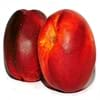Health Benefits
Cancer prevention, Heart care, Reduces nervous tension, Reduces blood circulation problems, Reduces stress, Regulation of heart rate, Strengthening of bones
Cancer prevention, Cures gastro-intestinal troubles, Heart care, Increase in haemoglobin, Prevents high blood pressure
General Benefits
Anti-inflammatory properties, Controls blood pressure, Digestive aid, Eye care, Helps in weight loss, Improves eye vision, Maintains healthy cholesterol level, Strengthens bones
Anti-inflammatory properties, Boosts immune system, Digestive aid, Eye care, Flu treatment, Helps in weight loss, Maintains healthy cholesterol level, Treatment of common cold
Skin Benefits
Anti-aging benefits, Reduces wrinkles, Treatment of dark spots, Treatment of skin diseases
Anti-aging benefits, Brightens and lightens complexion, Reduces wrinkles, Skin revitalization, Treatment of dark spots
Hair Benefits
Protects hair
Prevents hair loss, Promotes longer and healthier hair, Protects hair, Remedy for split ends, Treatment of dandruff
Allergy Symptoms
Diarrhea, Itching of mouth, Nasal congestion, Sneezing, Swelling of face, Watery eyes
Abdominal pains, Anaphylaxis, Vomiting
Side Effects
Allergic reaction
Allergic reaction
Best Time to Eat
Along with meal, As a snack in the late afternoon, Don't consume at night and before bed, Morning time (before lunch)
As a snack in the late afternoon, Don't consume at night and before bed, Don't eat after meal, Morning time (before lunch)
Vitamin B5 (Pantothenic Acid)
Not Available
Vitamin C (Ascorbic Acid)
Not Available
Vitamin E (Tocopherole)
Not Available
Vitamin K (Phyllochinone)
Not Available
Lutein+Zeaxanthin
Not Available
Calories in Fresh Fruit with Peel
Calories in Fresh Fruit without Peel
Not Available
Not Available
Calories in Frozen Form
Not Available
Calories in Dried Form
Not Available
Calories in Juice
Not Available
Calories in Jam
Not Available
Calories in Pie
Not Available
Type
Tree fruit, Tropical
Tree fruit
Varieties
Ahdar, Ahmar, Asfar, Blush, Champagne, Early Red, Eulalia, Fire Ball, Golden Red, Golden Yellow, Oliver, Thales, Thames Pride, Victor and Wolfe
Merryweather Damson, Shropshire Prune, President plum, Damson farleigh and Damson langley bullace
Color
Orange, Yellow
Dark purple
Inside Color
Orange
Yellow
Taste
Sweet, Tart
Juicy, Sweet, Tart
Soil Type
Clay, Loam, Sand, Well-drained
Clay, Loam, Moist, Sandy loam, Well-drained
Climatic Conditions
Warm to hot climate
Cold
Facts about
- Loquats are used in plum wine manufacturing.
- Dried leaves of loquat are used to make herbal tea.
- The seeds of loquat are slightly toxic & the symptoms of intoxication are nausea, vomiting & shortness of breath.
- The name Damson originates from the original name 'Damacus plum'.
- Damson wine was very popular in 19th century.
- This fruit is often used in jams due to its slightly tart behaviour.
Top Producer
Japan
United Kingdom
Other Countries
Brazil, Chile, China, Egypt, Israel, Italy, Morocco, Pakistan, Portugal, Spain, Turkey
Ireland, United States of America
Top Importer
China
United States of America
Top Exporter
Spain
France
Botanical Name
Eriobotrya japonica
Prunus domestica subsp. insititia
Synonym
Crataegus bibas or Mespilus japonica or Photinia japonica
Not Available
Subkingdom
Tracheobionta
Tracheobionta
Division
Magnoliophyta
Magnoliophyta
Class
Magnoliopsida
Magnoliopsida
Species
E. japonica
Prunus domestica subsp. insititia
Generic Group
Rose
Not Available
Difference Between Loquat and Damson
We might think that Loquat and Damson are similar with respect to nutritional value and health benefits. But the nutrient content of both fruits is different. Loquat and Damson Facts such as their taste, shape, color, and size are also distinct. The difference between Loquat and Damson is explained here.
The amount of calories in 100 gm of fresh Loquat and Damson with peel is 47.00 kcal and 46.00 kcal and the amount of calories without peel is Not Available and Not Available respectively. Thus, Loquat and Damson belong to Low Calorie Fruits and Low Calorie Fruits category.These fruits might or might not differ with respect to their scientific classification. The order of Loquat and Damson is Rosales and Rosales respectively. Loquat belongs to Rosaceae family and Damson belongs to Rosaceae family. Loquat belongs to Eriobotrya genus of E. japonica species and Damson belongs to Prunus genus of Prunus domestica subsp. insititia species. Beings plants, both fruits belong to Plantae Kingdom.









